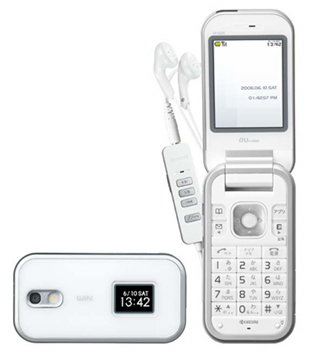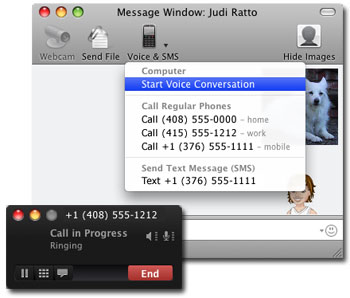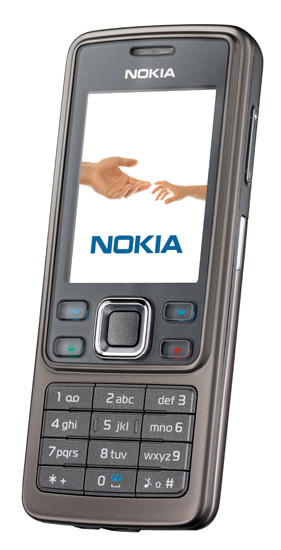Following is the file submitted by Google regarding the white space in TV Broadcasts. Google would like this space offered in a dynamic fashion, highest bidder at the time will receive the broadcasting medium for the given time slot. The white spaces are currently goes unused and TV Broadcasters are reluctant to let this space go. FCC already conducted WHITE SPACE PROTOTYPE TESTING, earlier this year. In any case the submission below is a good reading and you may find some valuable information, including some business acumen. To me it is all about getting your point across.
Ex Parte via Electronic Filing
Marlene H. Dortch
Office of the Secretary
Federal Communications Commission
445 12th Street, SW
Washington, D.C. 20554
Re: Authorized Ex Parte Contact – Unlicensed Operation in the TV Broadcast Bands (ET Docket No. 04-186)
Dear Ms. Dortch:
Google Inc. (“Google”), by its attorney, respectfully submits this ex parte letter in the above-referenced docket. We herein present our plans for mobile broadband services using the TV “white space,” along with an enhanced spectrum protection proposal that we are confident will eliminate any remaining legitimate concerns about the merits of using the white space for unlicensed personal/portable devices.
TV white space: unique opportunity, unique benefits
As Google has pointed out previously, the vast majority of viable spectrum in this country simply goes unused, or else is grossly underutilized. Our nation typically uses only about five percent of one of our most precious resources. Unlike other natural resources, there is no benefit to allowing this spectrum to lie fallow. The airwaves can provide huge economic and social gains if used more efficiently, as seen today with the relatively tiny slices utilized by mobile phones and WiFi services.
The unique qualities of the TV white space -- unused spectrum, large amounts of bandwidth, and excellent propagation characteristics -- offer a once-in-a-lifetime opportunity to provide ubiquitous wireless broadband access to all Americans. In particular, this spectrum can provide robust infrastructure to serve the needs of under-deployed rural areas, as well as first responders and others in the public safety community. Moreover, use of this spectrum will enable much-needed competition to the incumbent broadband service providers.
Google’s plans for open mobile platforms
Google is working diligently to lay the technological groundwork so that Americans may begin to see the benefits of utilizing this unused spectrum for wireless Internet access. There are several interrelated components to our current plans:
(1) In our December 17, 2007 letter to the Commission, we explained that we see considerable utility in a network that combines elements of both fixed/access unlicensed devices and personal/portable unlicensed devices. This “hybrid” approach will join together the tangible benefits of mobility, low cost, and ease of installation and use.
(2) Coupled with the “Android” open source platform for mobile consumer devices, TV white spaces can provide uniquely low-cost mobile broadband coverage for all Americans. As announced last fall, over thirty other companies are working with Google through the Open Handset Alliance to develop a fully open source software stack, including the operating system, middleware, and user applications. Android-powered handsets should begin appearing commercially later this year, and would be an excellent match for the TV white space.
(3) In the 700 MHz auction proceeding, Google advocated for openness at various network layers. In the context of TV white space, consumers will be able to enjoy robust access to the Internet, including the ability to download and utilize any lawful applications or content that is desired.
(4) Google also would be willing to provide, at no cost to third parties, the technical support necessary to make these plans happen; this could include intellectual property and reference designs for underlying technologies, open geo-databases maintained by Google, and other supporting infrastructure. Of course we welcome others as well with an interest in helping to provide such support.
No risk: an enhanced spectrum protection proposal
There are many ways to safely and reliably protect DTVs and wireless microphones, not all of which require spectrum sensing. Last fall, Motorola submitted a proposal in this proceeding that relies on a combination of geo-location (to protect broadcast TV) and beacons (to protect wireless microphones) Google believes both concepts, along with a “safe harbor” approach, should be seriously considered for incorporation into the FCC’s service requirements for the spectrum.
Under our own enhanced protection proposal, a TV white space device will not transmit on a channel until it first has received an "all clear" signal for that channel, either directly from a database of licensed transmitters in that area, or from a geo-located device with access to that database. That “permission to transmit” signal (at a maximum power level of 4W EIRP) would be sent on channels the geo-located device already knows are clear of licensed users. Any device without geo-location and database access would not transmit at all, unless and until it has successfully received advance permission from such a device.
Further, all TV white space devices would be blocked from transmitting by any wireless microphone beacon in that channel, using signals specifically designed to be easy to reliably detect, and coded to be identifiable to prevent abuse. These beacons should be quite inexpensive, and would be used in conjunction with existing wireless microphones, so there would be no need to replace legacy devices.
In addition, we are proposing a "safe harbor" for wireless microphones in channels 36-38. No TV white space device would be permitted to transmit in these channels. This will also protect medical telemetry devices and radio astronomy services, which are licensed to use channel 37.
Even in the absence of spectrum sensing, then, these enhanced measures should be more than adequate to protect all licensed uses.
Politics as usual: a potential stumbling block to the future
It is an unfortunate, yet not surprising, fact that some entities prefer the comfort of the past to the promise of the future, and use their influence to convince policymakers to protect legacy applications -- at any and all costs. Technological innovation, and the significant changes it brings, can be a scary prospect for some. But it should not be the government’s role to protect the status quo, especially by blocking access to the new.
Clearly the rules for unlicensed use of TV white spaces should be written to amply protect licensed uses, while permitting useful services to be deployed. Those rules should include important constraints like reasonable detection thresholds, power limits, spectral masks, and geo-location requirements. But those rules should not select any particular technology. Nor should rulemaking be contingent on the existence of any specific technology implementing those rules. And certainly the TV white space should not be "earmarked" for any particular use or users, as has been proposed by some cellular carriers for their use specifically as backhaul (which, as we already have pointed out, would be a particularly inefficient use of this spectrum).
In short, FCC rules should specify only what is allowed, not how that result is to be achieved, or by whom. Much like the Internet itself, the agency’s specifications should as much as possible enable “innovation without permission” (although with necessary technical constraints). For example, the Part 15 rules permitting WiFi were written years before the IEEE 802.11 technology was even contemplated, much less existed. If those rules had been contingent on the pre-existence of WiFi, one of the most successful and efficient uses of spectrum in the history of wireless communications likely never would have happened.
The state of testing and the state of the technology
Much has been made of recent issues with third party equipment in the OET's spectrum sensing tests. In our view, particularly in light of our enhanced protection proposal, these issues should be moot. Simply put, no product will come to market unless the FCC can verify that the device does not interfere with TV or wireless microphone signals. And the combination of geo-location, beacons, and “safe harbors” is more than sufficient to ensure the protection of all licensed uses.
Spectrum sensing already has demonstrated its effectiveness in other settings. In fact, spectrum sensing capabilities are being deployed and used extensively in the field, and are being relied on to protect America’s troops and our national defense. Widely used 802.11a-based WiFi currently supports spectrum sensing to protect military radar from interference. Moreover, the Defense Advanced Research Projects Agency (DARPA) neXt Generation (XG) program has graduated from lab experiments to field use of the technology. Both examples represent an important existence proof for the viability of spectrum sensing, where the risks of failure inarguably are far greater than those potentially posed to broadcast TV and wireless microphones.
Creating a glidepath: TV white spaces as a spectrum sensing testbed
Google is a firm believer in the capabilities of spectrum sensing. Nonetheless, in order to clarify the record on the use of spectrum sensing on a standalone basis for unlicensed devices, the Commission should consider issuing a Further Notice of Proposed Rulemaking to address any lingering questions.
In particular, while using a combination of geo-location and beacons guarantees more than adequate levels of protection for all licensed uses, the TV white space also could provide a way of validating the spectrum sensing concept. By using spectrum sensing as well as geo-location/beacons, and reporting back to a central database any discrepancies, there will be more than enough data for the FCC unambiguously to validate spectrum sensing as a viable technology. This would be a much larger sample size than otherwise would be possible with any testing program, and would be backed up by geo-location and beacons, so no harm could come during this provisional period. Once enough confirmatory data has been obtained, we can begin relying exclusively on spectrum sensing, under more permissive FCC rules that do not depend on geo-location or beacons.
The vast promise of spectrum sensing technologies
Modern spectrum sensing technologies enabled by low-cost computers in communications devices can provide one obvious mechanism for restoring our nation's spectrum resource to practical use. These technologies allow devices to use spectrum on a secondary basis without interfering or causing any harm to primary users or uses.
Once demonstrated in the TV white spaces, this method can become the technical basis for extending spectrum sensing to other bands, and perhaps ultimately to all bands.
A specific approach to increasing the efficiency of spectrum utilization is our "dynamic auction" proposal. One form this potentially could take, enabled by spectrum sensing technologies, is a real-time airwaves auction model:
For each available spectrum band, the licensee could bestow the right to transmit an amount of power for a unit of time, with the total amount of power in any location being limited to a specified cap. This cap would be enforced by measurements made by the communications devices. For channel capacity efficiency reasons, bands should be allocated in as large chunks as possible. The airwaves auction would be managed via the Internet by a central clearinghouse.
This large amount of spectrum, coupled with advanced signal processing techniques made practical by the exponential growth in computing power (Moore's law), can make data rates in the gigabits-per-second available in the not-to-distant future. As a result, we soon could see a low-cost and open infrastructure, supporting a near-unlimited bandwidth Internet service, improving every year as computer and radio technologies continue to evolve. This would be akin to a faster, longer range, higher data rate WiFi service – “WiFi 2.0” if you will.
Conclusion: The future is now
We appreciate the opportunity to discuss Google’s mobile broadband service plans, and our enhanced spectrum protection proposal. While we continue to believe that spectrum sensing alone is more than sufficient to protect the legitimate concerns of the broadcasters and wireless microphone communities, we are willing to go considerably farther in order to secure a positive outcome for all. The value of the TV white space to all Americans simply is too great to allow this unique opportunity to be blocked by unfounded fear, uncertainty, and doubt.
Should you have any questions, please do not hesitate to contact the undersigned.
Respectfully submitted,
Richard S. Whitt, Esq.
Washington Telecom and
Media Counsel
Google Inc. Google to FCC, Let Us Make Some Digital Noise In That White Space.
tag: FCC, WIA, ‘white space’ device testing, ‘white space’ testing,






